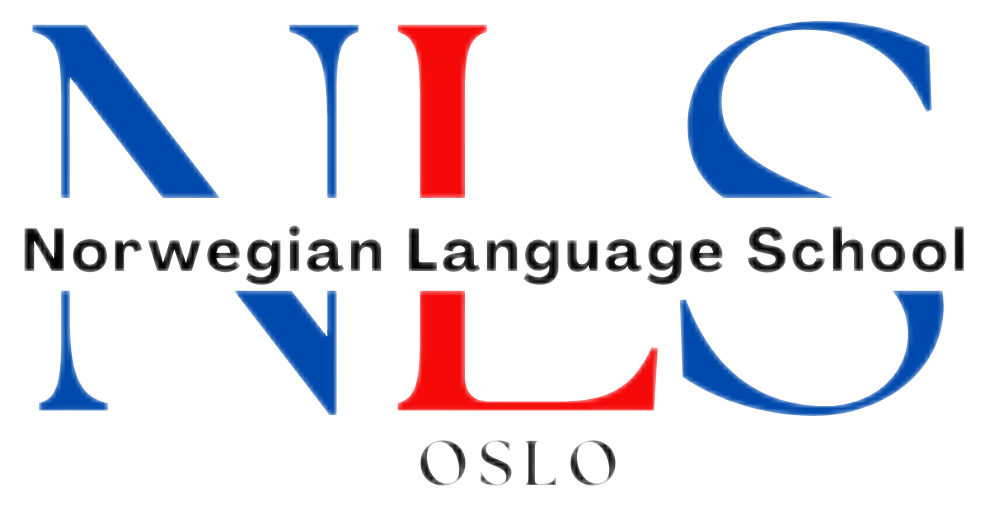

Understanding Main Clauses and Word Order in Norwegian (A1-B1 Level)
Learning Norwegian grammar involves grasping the rules of main clauses (helsetninger), which are the foundation of clear and effective communication. Main clauses are independent sentences that provide complete meaning and follow a structured word order. These rules are particularly important for learners at the A1-B1 level, as they set the groundwork for building grammatically correct sentences.
In this guide, we will explore the structure of main clauses, the rules of word order, and practical examples to help learners master these essential concepts. Additionally, you can enhance your learning by enrolling in our Norwegian group classes at NLS Norwegian Language School in Oslo, where we cover these topics in detail.
Table of Contents
ToggleWhat is a Main Clause?
A main clause (helsetning) is a sentence that contains at least a subject (the doer of the action) and a verb (the action). It may also include additional elements, such as objects, adverbials, or complements, and it can stand alone as a complete thought.
Example:
- Lise lager middag hver kveld.
(Lise cooks dinner every evening.)
In this sentence:
- Lise is the subject (subjekt),
- lager is the verb (verbal),
- middag is the object (objekt), and
- hver kveld is the adverbial (adverbial), providing information about time.
Word Order in Norwegian Main Clauses
Norwegian follows a relatively strict word order, especially in main clauses. The default order is Subject-Verb-Object (SVO), but other sentence elements, such as adverbials or question words, can shift the structure. The placement of words is key to expressing meaning clearly.
Structure of a Norwegian Main Clause
A main clause in Norwegian is divided into three key parts:
- Forfelt (Front field): The first element of the sentence. This can be the subject, an adverbial, or a question word.
- Midtfelt (Middle field): This includes the verb, subject (if not already in the front field), sentence adverbs, and auxiliary verbs.
- Sluttfelt (End field): This includes objects, adverbials, or complements.
Example:
| Forfelt | Midtfelt | Sluttfelt |
|---|---|---|
| Nora | har (verb) aldri (sentence adverb) vært (verb) | på konserten før. |
Translation:
- Nora har aldri vært på konserten før.
(Nora has never been to the concert before.)
The Verb-Second Rule (V2 Rule)
One of the most important rules in Norwegian main clauses is the verb-second rule (V2). This means that the conjugated verb must always occupy the second position in the sentence, regardless of what comes first.
Examples:
- Subject-first sentences (neutral order):
- Erik kjører til skolen hver dag.
(Erik drives to school every day.)- Here, the subject “Erik” comes first, followed by the verb “kjører.”
- Erik kjører til skolen hver dag.
- Adverbial-first sentences (inverted order):
- I sommer reiste de til Italia.
(This summer, they traveled to Italy.)- The adverbial “I sommer” comes first, so the subject “de” moves after the verb “reiste.”
- I sommer reiste de til Italia.
- Question-word-first sentences:
- Hvorfor spiser du så tidlig?
(Why do you eat so early?)- The question word “Hvorfor” occupies the first position, and the verb “spiser” remains in the second position.
- Hvorfor spiser du så tidlig?
- Imperative sentences (verb-first order):
- Hent boken fra hyllen!
(Fetch the book from the shelf!)- Imperative sentences often begin with the verb.
- Hent boken fra hyllen!
Sentence Elements in Detail
1. The Subject
The subject is the person, thing, or concept performing the action in the sentence. It typically appears in the middle field but can also appear in the front field for emphasis.
Example:
- Kari leser avisen hver morgen.
(Kari reads the newspaper every morning.)
2. The Verb
The verb describes the action or state. The conjugated verb must always occupy the second position in main clauses (except in imperative sentences).
Example:
- I dag skal vi møte læreren.
(Today, we will meet the teacher.)
3. The Object
The object is the thing or person receiving the action. Objects typically appear in the end field of the sentence.
Example:
- Maria kjøpte en ny telefon.
(Maria bought a new phone.)
4. Adverbials
Adverbials provide extra information about time, place, or manner. They can appear in the front field, middle field, or end field, depending on their role and emphasis.
Examples:
- Front field:
- Hver helg besøker vi besteforeldrene.
(Every weekend, we visit the grandparents.)
- Hver helg besøker vi besteforeldrene.
- Middle field:
- Vi har alltid spist middag klokken seks.
(We have always eaten dinner at six o’clock.)
- Vi har alltid spist middag klokken seks.
- End field:
- Hun ventet lenge på turen.
(She waited a long time for the trip.)
- Hun ventet lenge på turen.
5. Sentence Adverbs (Setningsadverbialer)
Sentence adverbs modify the entire sentence. Examples include negations (ikke), frequency words (alltid, ofte), and certainty words (kanskje, sannsynligvis). These are typically placed in the middle field after the subject and before the main verb.
Example:
- Vi har ikke sett filmen ennå.
(We haven’t seen the movie yet.)
Word Order in Questions
Yes/No Questions
In yes/no questions, the verb comes first, followed by the subject, and then the rest of the sentence.
Example:
- Har du gjort leksene dine?
(Have you done your homework?)
Wh-Questions
In wh-questions (spørresetninger), the question word comes first, followed by the verb, the subject, and then the rest of the sentence.
Example:
- Hva vil du spise til middag?
(What do you want to eat for dinner?)
Common Word Order Mistakes
Learners often make mistakes when placing the verb, especially in sentences where the first element is not the subject. The key is to always ensure that the conjugated verb remains in the second position.
Incorrect:
- I går hun gikk til biblioteket.
Correct:
- I går gikk hun til biblioteket.
(Yesterday, she went to the library.)
Practicing Word Order
Mastering word order in Norwegian requires regular practice. Here are some tips:
- Break Down Sentences: Analyze the structure of sentences you hear or read. Identify the subject, verb, and other elements.
- Reorder Sentences: Write sentences with different front field elements (subject, adverbial, etc.) to practice the verb-second rule.
- Join a Class: Structured lessons with feedback can significantly improve your understanding. Our Norwegian group classes at NLS Norwegian Language School in Oslo are an excellent way to practice and refine your grammar skills.
Summary of Key Points
- Norwegian main clauses follow the verb-second rule (V2), meaning the conjugated verb must always occupy the second position in the sentence.
- Sentence structure is divided into three parts: Forfelt (front field), Midtfelt (middle field), and Sluttfelt (end field).
- Different sentence types, such as subject-first, adverbial-first, yes/no questions, and wh-questions, require different word orders.
- Sentence adverbs (e.g., “ikke,” “alltid”) are placed in the middle field after the subject and before the main verb.
Final Thoughts
Learning Norwegian word order is essential for expressing yourself clearly and effectively. By understanding and practicing these rules, you will be able to construct grammatically correct sentences with confidence.
If you are eager to improve your skills further, we recommend joining our Norwegian group classes at NLS Norwegian Language School in Oslo. Our experienced teachers provide detailed explanations, practical exercises, and plenty of opportunities for practice, making it easier for you to master the nuances of Norwegian grammar.
If you want to learn Norwegian, you can register for classes here. We look forward to hearing from you and helping you become fluent in Norwegian.





